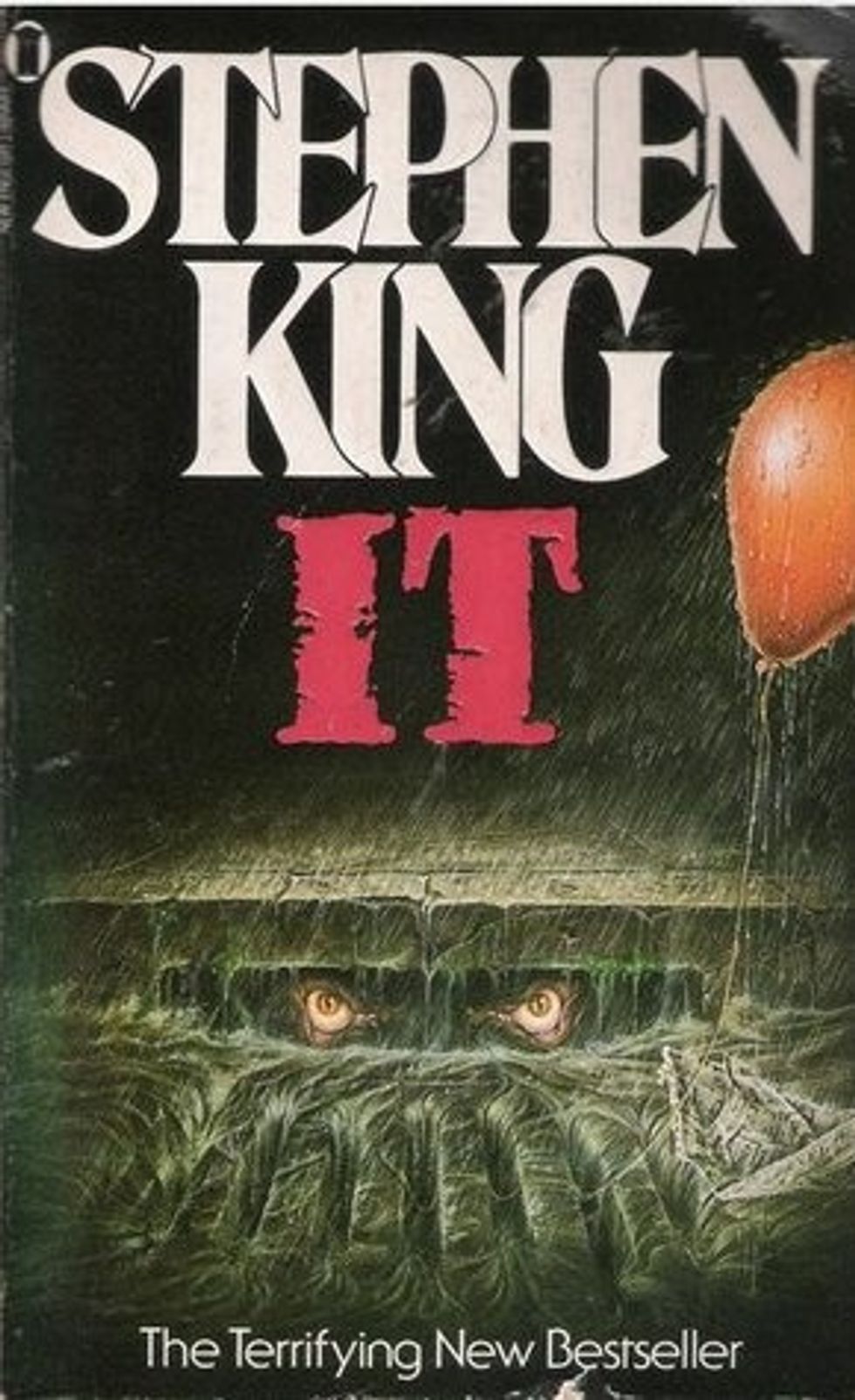
Pennywise
Photo by Andres Gomez - Unsplash
In Andy Muschietti’s new film, IT: Chapter Two, audiences are reintroduced to the band of nerdy, endearing children they met two years ago in the 2017 installment of IT.
Now, Beverly Marsh (Jessica Chastain), Bill Denbrough (James McAvoy), Richie Tozier (Bill Hader), Mike Hanlon (Isaiah Mustafa), Eddie Kaspbrak (James Ransone), and Ben Hanscom (Jay Ryan) are all grown up—encumbered with old tensions, unresolved childhood trauma, and new secondary sex characteristics—and they’re back in Derry, Maine to face Pennywise the dancing clown for the second and final time.
Before we go any further into the cinematic universe, it’s important we get one thing out of the way. Now that both movies have come out and the onscreen saga of Pennywise is complete, one thing is abundantly clear: Andy Muschietti’s films do not do the book justice. I know, I know, that’s an inexcusably insufferable thing to say when asked about a movie. But if there’s one thing you can count on every horn-rimmed-glasses-wearing, millennial journalist to spout as readily as climate change facts from a half-read The New Yorker article, it’s the phrase, “The book was better.” In this instance, I humbly count myself among them (my glasses are more of a Cynical Harry Potter shape, though) and ask you to trust me that it’s a relevant observation.

In Stephen King’s 1986 novel, IT, the group of children portrayed are so vividly real—in all of their terror and joy on the brink of puberty—that adult readers are forced to remember their own childhoods through an uncomfortably accurate lens, rather than the sunshiney, carefree one our culture falsely assigns in retrospect. King reminds us that childhood is, above all else, fraught with an intensity of experience, both good and bad (scary clown or not). King brilliantly weaves together the parallel stories of the Loser’s Club as children and adults, switching between the two narratives from chapter to chapter, subtly showing that childhood fears never really die and that life is often a series of patterns repeating themselves. Contrary to popular belief, IT isn’t really a book about a murderous clown; it’s a book about the horrors and complications of growing up.
Unfortunately, for all the ways Andy Muschietti’s 2017 film is at least a semi-worthy tribute to these aspects of King’s book, IT: Chapter Two is not. It’s possible that the second installment was always set up to fail because—while the childhood portion of the book managed to stand alone in the film—the story of the Loser’s Club as adults is simply inextricable from the parallel story of their disrupted youth. Without a side-by-side view of their shared childhood, the story falls flat.
Perhaps most strikingly, IT: Chapter Two manages to feel longer than the 1,100-page book. A nearly three-hour run-time for any movie is self-important, but a three-hour run-time for a horror movie is just exhausting. Sure, they had a lot of ground to cover, but they managed to pack about a half hour’s worth of story into three badly-paced hours. There were plenty of funny and sentimental moments as the adults revisited their childhood haunts and dynamics, and it was an excellent choice to insert the child actors from the first film in gripping memory sequences, but the first movie seemed to do most of the work for the second.
Let’s answer one of the first questions you ask a friend who’s just seen a horror movie: “Was it scary?” In this case, the answer is complicated. Admittedly, the images that Muschietti and his team pulled from King’s imagination were often inventive and terrifying…at first. But, perhaps because of the length of the film or because it lacked the guidance of someone experienced in crafting horror, each monster was left onscreen too long. Soon, familiarity took the edge off each grotesque spectacle, and eventually subsumed it all together until the monsters felt downright silly, something King never allows to happen in the mind’s eye of his reader and something that should never be allowed to happen on screen.
This is a particularly blatant problem at the end of the movie when the Loser’s Club fights Pennywise (in all his various forms) in a lengthy, eventually tiresome battle sequence. Before the movie premiered, many diehard King fans doubted that the mysticism and nuance of the book’s ending could be translated effectively onto screen, and they were right. While no one can blame the screenwriters for excluding the group sex scene between the children (yes, that really is in the book), the story’s end is decidedly oversimplified and drawn out.

In the book, the theme of good vs. evil comes to a head when the Losers venture into the alternate dimension Pennywise is from and speak to his antithesis, a “turtle” who embodies the forces of good both within the children and in the world at large. It’s a powerful, complicated ending worthy of the saga that precedes it. Unfortunately, Muschietti managed to turn it into a limp, anti-bullying PSA. In the film, the Losers shout at Pennywise, verbally belittling him and causing him to physically shrink until they easily rip out his heart, leaving the audience with questions like, “That’s it? Why didn’t they do that before?” and “So…Pennywise was just the Losers’ insecurities…?” and “I paid $17 dollars for this?” It’s a cheesy cop-out clearly designed by a movie maker who’s scared to delve into the ambiguities and complications of King’s original ending.
Still, not all differences between the book and the movie are bad. In King’s novel, a romantic connection between Eddie and Richie is only vaguely implied. In the film, Muschietti solidified the implication, showing Richie (Bill Hader) carving “R+E” into a bridge after Eddie’s death. In fact, Hader offers many of the movie’s best moments, giving the film’s most fully-realized performance. Unfortunately, his cheeky one-liners often fall flat thanks to a cast that struggles to capture the same juxtaposition between lightheartedness and terror that the child actors in the first movie nailed.
In the end, perhaps it’s unfair to blame Muschietti or the cast for Chapter Two‘s failure. Maybe there are just some books that don’t translate to film, and maybe that’s okay. God knows that won’t stop studios from continuing to try, and it will continue to give insufferable nerds like me the opportunity to say, “The book was better” every chance we get.- Don’t Trust the Elderly in the “It Chapter Two” Trailer – Popdust ›
- Which Pennywise Clown Is Scarier: 1990 or 2019? – Popdust ›
- It: Chapter Two’s Bill Skarsgard and Andy Muschietti on Pennywise … ›
- Hollywood Is Terrible at Climate Change Movies. Here Are 7 of the Best – Popdust ›
- The 10 Best Stephen King Movies Ranked – Popdust ›
- It Chapter Two – Ending Explained and Book to Movie Differences … ›
- How It Chapter Two Differs from the Book | Den of Geek ›
- It: Chapter 2 ending explained and how it differs from Stephen King’s … ›
- It Chapter Two director on DIFFERENCES to Stephen King’s book … ›
- ‘It Chapter Two’ review: Stephen King sequel doesn’t know when to … ›
- It Chapter 2 will “absolutely” surprise fans of the book ›
- It Chapter Two Ending: How the Movie Differs from the Book ›
- How IT Chapter Two Ends, And How It’s Different Than The Book … ›
- It Chapter 2 Movie Book Differences – Director Andy Muschietti on … ›













